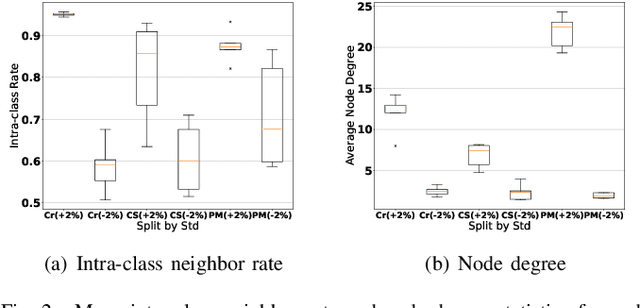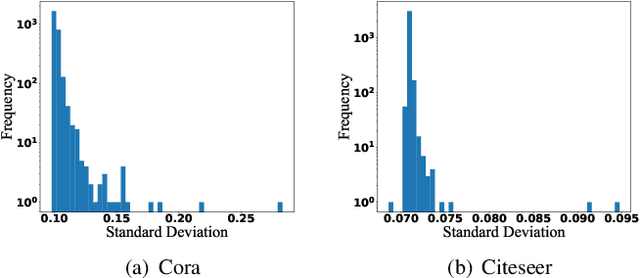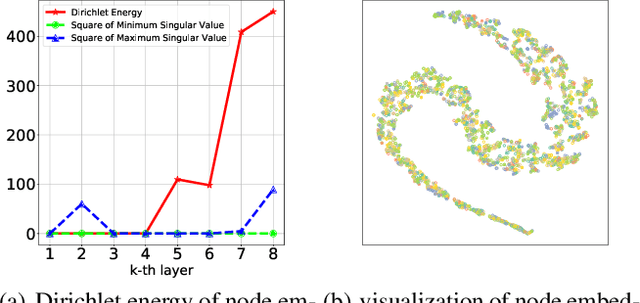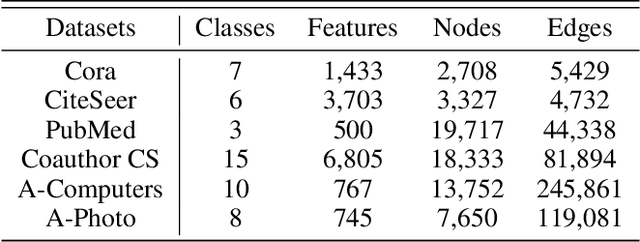Langzhang Liang
Sign is Not a Remedy: Multiset-to-Multiset Message Passing for Learning on Heterophilic Graphs
May 31, 2024



Abstract:Graph Neural Networks (GNNs) have gained significant attention as a powerful modeling and inference method, especially for homophilic graph-structured data. To empower GNNs in heterophilic graphs, where adjacent nodes exhibit dissimilar labels or features, Signed Message Passing (SMP) has been widely adopted. However, there is a lack of theoretical and empirical analysis regarding the limitations of SMP. In this work, we unveil some potential pitfalls of SMP and their remedies. We first identify two limitations of SMP: undesirable representation update for multi-hop neighbors and vulnerability against oversmoothing issues. To overcome these challenges, we propose a novel message passing function called Multiset to Multiset GNN(M2M-GNN). Our theoretical analyses and extensive experiments demonstrate that M2M-GNN effectively alleviates the aforementioned limitations of SMP, yielding superior performance in comparison
ResNorm: Tackling Long-tailed Degree Distribution Issue in Graph Neural Networks via Normalization
Jun 16, 2022



Abstract:Graph Neural Networks (GNNs) have attracted much attention due to their ability in learning representations from graph-structured data. Despite the successful applications of GNNs in many domains, the optimization of GNNs is less well studied, and the performance on node classification heavily suffers from the long-tailed node degree distribution. This paper focuses on improving the performance of GNNs via normalization. In detail, by studying the long-tailed distribution of node degrees in the graph, we propose a novel normalization method for GNNs, which is termed ResNorm (\textbf{Res}haping the long-tailed distribution into a normal-like distribution via \textbf{norm}alization). The $scale$ operation of ResNorm reshapes the node-wise standard deviation (NStd) distribution so as to improve the accuracy of tail nodes (\textit{i}.\textit{e}., low-degree nodes). We provide a theoretical interpretation and empirical evidence for understanding the mechanism of the above $scale$. In addition to the long-tailed distribution issue, over-smoothing is also a fundamental issue plaguing the community. To this end, we analyze the behavior of the standard shift and prove that the standard shift serves as a preconditioner on the weight matrix, increasing the risk of over-smoothing. With the over-smoothing issue in mind, we design a $shift$ operation for ResNorm that simulates the degree-specific parameter strategy in a low-cost manner. Extensive experiments have validated the effectiveness of ResNorm on several node classification benchmark datasets.
Graph Partner Neural Networks for Semi-Supervised Learning on Graphs
Oct 18, 2021



Abstract:Graph Convolutional Networks (GCNs) are powerful for processing graph-structured data and have achieved state-of-the-art performance in several tasks such as node classification, link prediction, and graph classification. However, it is inevitable for deep GCNs to suffer from an over-smoothing issue that the representations of nodes will tend to be indistinguishable after repeated graph convolution operations. To address this problem, we propose the Graph Partner Neural Network (GPNN) which incorporates a de-parameterized GCN and a parameter-sharing MLP. We provide empirical and theoretical evidence to demonstrate the effectiveness of the proposed MLP partner on tackling over-smoothing while benefiting from appropriate smoothness. To further tackle over-smoothing and regulate the learning process, we introduce a well-designed consistency contrastive loss and KL divergence loss. Besides, we present a graph enhancement technique to improve the overall quality of edges in graphs. While most GCNs can work with shallow architecture only, GPNN can obtain better results through increasing model depth. Experiments on various node classification tasks have demonstrated the state-of-the-art performance of GPNN. Meanwhile, extensive ablation studies are conducted to investigate the contributions of each component in tackling over-smoothing and improving performance.
 Add to Chrome
Add to Chrome Add to Firefox
Add to Firefox Add to Edge
Add to Edge